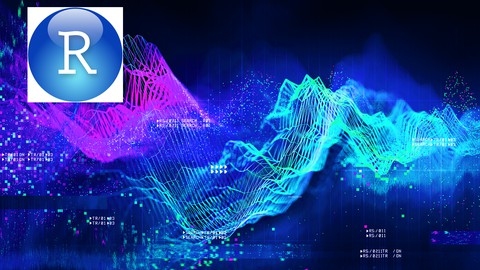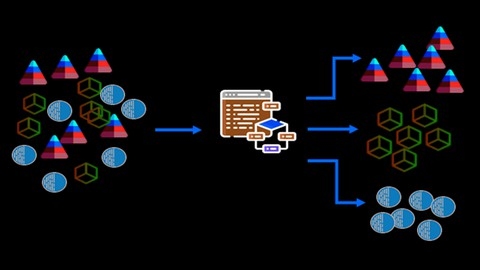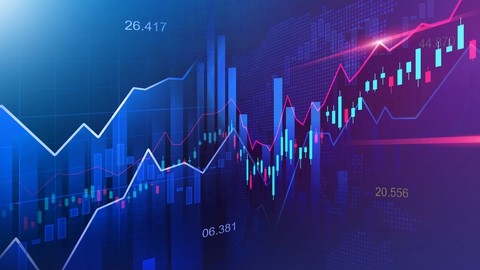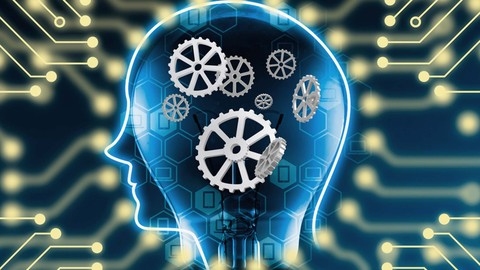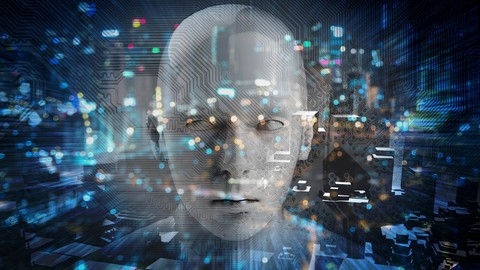Cluster analysis is a powerful technique used in unsupervised machine learning to group similar data points together, revealing hidden patterns and structures within datasets.
It’s a valuable tool for various applications, including customer segmentation, image recognition, anomaly detection, and much more.
By learning cluster analysis, you’ll gain the ability to extract meaningful insights from complex data, leading to better decision-making and innovation.
Finding the right cluster analysis course on Udemy can feel overwhelming, especially with the abundance of options available.
You want a course that provides a solid theoretical foundation while offering practical, hands-on experience with different clustering algorithms and real-world applications.
The ideal course will guide you through the intricacies of clustering, enabling you to confidently apply these techniques to your own projects.
After reviewing numerous courses, we’ve identified Cluster Analysis and Unsupervised Machine Learning in Python as the best overall course on Udemy for mastering cluster analysis.
This comprehensive course covers a wide range of clustering techniques, from K-Means to Gaussian Mixture Models, and provides practical examples using popular Python libraries like NumPy, SciPy, and TensorFlow.
The clear explanations and hands-on exercises make it an excellent choice for both beginners and those looking to deepen their understanding of cluster analysis.
However, we understand that everyone has different learning preferences and goals.
That’s why we’ve compiled a list of other top-rated cluster analysis courses on Udemy, catering to various skill levels and focusing on specific aspects of this fascinating field.
Keep reading to discover the perfect course to embark on your cluster analysis journey!
Cluster Analysis and Unsupervised Machine Learning in Python
This course teaches you how to group data points into meaningful clusters using different methods, all in Python.
You will start with K-Means clustering, learning how to write the code and understand the theory behind it.
Then, you will move on to more advanced topics like Soft K-Means, where the algorithm considers the chance of a data point belonging to multiple clusters.
You will also learn about Hierarchical Clustering, which builds clusters based on how similar they are, like organizing things into groups and subgroups.
You will explore real-world applications of cluster analysis, such as finding related words in text and identifying patterns in images using the MNIST dataset, a collection of handwritten digits used for training image recognition systems.
You will delve into Gaussian Mixture Models (GMMs), a way to model and cluster data using probability.
The course also covers Kernel Density Estimation, which helps you understand the spread of your data to identify potential clusters.
You will learn to use these techniques in Python with libraries like NumPy, SciPy, Matplotlib, Pandas, and TensorFlow.
The course teaches you how to set up your coding environment, install the necessary software, and use tools like Jupyter Notebook for interactive coding.
It covers both Python 2 and Python 3, so you’ll be familiar with the latest language features.
The instructor provides guidance on how to learn effectively and what you should already know about machine learning before starting.
Cluster Analysis- Theory & workout using SAS and R
The course is divided into four comprehensive parts, covering both the theoretical and practical aspects of cluster analysis.
In Part 1, you’ll dive into cluster analysis using SAS.
You’ll gain an intuitive understanding of clusters and learn the key differences between cluster analysis and decision trees.
The course motivates you by showcasing real-world industry applications and case studies, demonstrating how clustering can be used as a strategic tool.
Moving on, you’ll explore hierarchical clustering in-depth.
The course explains the steps involved, associated terminology, and how to access SAS for free.
You’ll learn to interpret SAS outputs, use Excel for hierarchical clustering, and understand scree plots for determining the optimal number of clusters.
The importance of standardizing variables and interpreting dendrograms is also covered.
The course then transitions to non-hierarchical clustering, specifically the K-means algorithm.
You’ll gain a graphical understanding of K-means, compare it to hierarchical clustering, and learn how to apply it using SAS.
The instructors provide a detailed explanation of the SAS output, guiding you through each pass.
Additionally, you’ll learn about variants of hierarchical clustering, different distance and linkage functions, and the distinctions between agglomerative and divisive approaches.
Throughout, the course reinforces your understanding with practice exercises and PDFs for each section.
In Part 2, you’ll learn to perform cluster analysis using R, covering both hierarchical and non-hierarchical clustering functions and their implementation.
Part 3 focuses on applying cluster analysis in data mining scenarios and industrial setups.
You’ll learn how to handle nominal and ordinal categorical variables, deal with missing values, detect and treat outliers, standardize numeric variables, and select relevant variables through variable clustering.
The course also covers iterating for final clusters and presenting the cluster solution to stakeholders.
Finally, Part 4 provides practice assignments and model solutions using both R and SAS, allowing you to solidify your learning.
The course also includes a FAQ section and a bonus topic on analytics, data science, machine learning interview questions.
K-Means for Cluster Analysis and Unsupervised Learning in R
This course will teach you how to use K-Means clustering, a powerful tool for finding patterns in data.
You’ll begin by learning the basics of R and RStudio, essential software for data analysis.
You’ll learn how to install and use these tools, as well as the fundamentals of programming in R, such as data types, structures, and loops.
Once you’re comfortable with the basics, you’ll dive into the theory behind K-Means clustering, exploring key concepts and practical applications.
The course then guides you through real-world examples, like applying K-Means to email marketing.
You’ll even gain hands-on experience visualizing your results with heatmaps.
The course goes beyond the basics of K-Means clustering, introducing you to more advanced techniques like Fuzzy K-means and Entropy Weighted K-Means, giving you more flexibility in your analysis.
You’ll also learn how to determine the best number of clusters for your data, a crucial step in achieving meaningful insights.
Throughout the course, you will work on practical lab exercises that solidify your understanding of K-Means clustering.
You’ll learn how to analyze data, evaluate the performance of clustering algorithms, and choose the optimal number of clusters for your data.
You’ll have the opportunity to apply your knowledge to a real-world case study, demonstrating your mastery of the material.
Cluster Analysis & Unsupervised Machine Learning in R
This course equips you with the skills to perform cluster analysis, a powerful machine learning technique for uncovering hidden patterns in data.
You will learn how to use R and its powerful IDE, RStudio, to write algorithms from scratch and gain practical experience with real-world applications.
The journey begins with the fundamentals of machine learning and progresses to advanced clustering algorithms such as Hierarchical Clustering, K-Means Clustering, Fuzzy K-Means, and Entropy Weighted K-Means.
You will work with satellite images in Google Earth Engine, learning to import, visualize, and analyze them for mapping purposes.
You will master the art of creating heatmaps, visual representations of complex data, to gain deeper insights from your analysis.
Through hands-on labs and projects, you will develop a strong understanding of data manipulation in R, model evaluation, and performance assessment of different clustering algorithms.
You will not only learn the theory but also apply your knowledge to real-world case studies, building the expertise to develop your own clustering models and interpret the results in various contexts.
Cluster Analysis : Unsupervised Machine Learning in Python
This course takes you on a journey into the world of cluster analysis, a key part of unsupervised machine learning.
You start by building a strong foundation in artificial intelligence and machine learning.
This includes understanding supervised learning, where you explore classifications, used for categorizing data, and regressions, used for predicting numerical values.
With this foundation, you delve into the heart of the course – clustering in unsupervised learning.
You explore a variety of clustering techniques including the popular K-Means clustering and hierarchical clustering, and learn how to evaluate their effectiveness using metrics like the Silhouette Score, Calinski-Harabasz Index, and Davies-Bouldin Index.
You also explore more advanced methods like Mean Shift Clustering, DBSCAN, and OPTICS, comparing their strengths and limitations for different scenarios.
Finally, you discover Spectral Clustering, adding another powerful technique to your toolbox.
You learn to use the Python platform, a popular programming language for data analysis, to build and evaluate all these clustering models, gaining practical skills applicable to real-world data analysis challenges.
Cluster Analysis & Machine Learning: Unveiling Patterns
You’ll learn how to analyze and organize data, identify patterns, and group similar data points together.
The course explores different clustering techniques, like the hierarchical method, where you’ll learn about single link, 1-linkage, and Ward’s methods.
You’ll gain hands-on experience with K-means clustering, a popular technique, along with its variations.
This course then transitions to advanced topics, incorporating machine learning techniques.
You’ll use programming languages like Python to preprocess your data and analyze distributions using tools like pie charts, histograms, and violin plots.
You’ll learn how to interpret these visualizations to identify relationships within your data, a crucial step for building accurate models.
You’ll then delve into correlation analysis, modeling, and cluster prediction.
You will work on a real-world “Shopping Analysis” project, applying your new skills to a practical scenario.
You’ll use your knowledge of K-means cluster theory, two-step cluster analysis, and the interpretation of statistical outputs like dendrograms and scree plots to analyze and interpret your cluster results.
The course uses tools like SPSS for analysis, giving you experience with industry-standard software.
The course provides a deeper understanding of cluster analysis concepts, exploring its meaning and how it’s applied in different situations.
You’ll examine real-world examples to solidify your understanding of this powerful data analysis technique.
Clustering & Classification With Machine Learning In Python
This course equips you with the ability to use Python for clustering and classification tasks.
You start with the basics, learning how to use Python and essential data science libraries like Pandas.
This library helps you clean and organize data, preparing it for analysis.
You will discover how to import data from various sources like CSV files, Excel spreadsheets, and even databases.
The course then introduces unsupervised learning techniques.
You’ll explore K-Means Clustering and Gaussian Mixture Modeling, which help you uncover hidden patterns and group data points without prior knowledge.
You’ll discover how to determine the ideal number of clusters and apply these algorithms to real-world datasets.
Additionally, you delve into hierarchical clustering, a technique that creates a visual representation of data relationships, enabling you to explore connections between data points and identify groups based on their proximity.
Moving on to supervised learning, you’ll learn to build models that can predict future outcomes based on labeled data.
The course covers a variety of classification methods including Logistic Regression, kNN, Naive Bayes, and Support Vector Machines (SVMs).
You’ll gain an understanding of how these models work and learn how to assess their accuracy.
The course goes beyond traditional machine learning by introducing you to deep learning techniques using Neural Networks.
You’ll learn to create and train sophisticated models capable of tackling more complex classification problems.
You’ll explore different types of Neural Networks, including Perceptrons and Multi-Layer Perceptrons (MLP), and gain hands-on experience with powerful tools such as H2O for deep learning classification.
Clustering & Classification With Machine Learning In R
This course equips you with practical skills to excel in clustering and classification using machine learning within the R programming environment.
You will start by mastering the import of data from diverse sources, including CSV files, Excel spreadsheets, and even web-based HTML tables.
You will then learn to clean and prepare your data using the dplyr package, visualizing it with ggplot2 to unveil hidden patterns.
The course then immerses you in unsupervised learning, where you will explore various clustering algorithms like K-means, Hierarchical Clustering, and DBSCAN.
You will also delve into techniques like Partitioning Around Medoids (PAM) and Expectation-Maximization (EM) for different clustering scenarios.
The curriculum doesn’t neglect supervised learning either.
You will learn about techniques such as Logistic Regression, Linear Discriminant Analysis, and Classification Trees, going on to explore powerful algorithms like Random Forests (RF) and Support Vector Machines (SVM).
Finally, you will dive into feature reduction techniques like Principal Component Analysis (PCA) and Multidimensional Scaling to simplify your data without sacrificing crucial information.
You will also master feature selection methods like LASSO Regression, Boruta Analysis, and FSelector, allowing you to pinpoint the most influential variables within your datasets.




